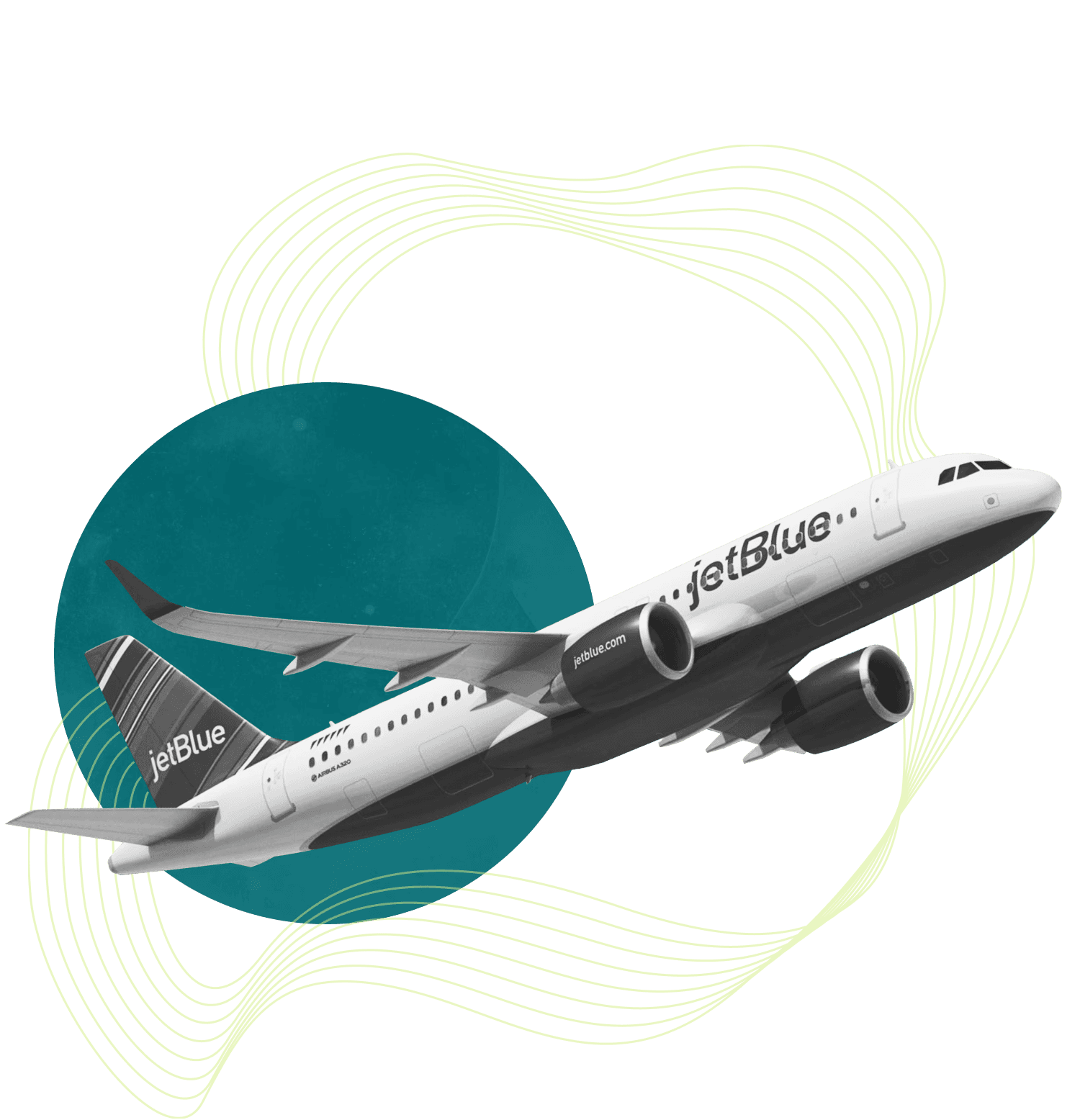7 min. read
Last updated May 8, 2025
Key takeaways
SAF and e-SAF mandates are reshaping the aviation fuel market. The EU and UK impose steep non-compliance penalties, turning regulatory requirements into a strategic lever for those who act early.
Non-compliance is costly. Penalties range from 2 to 13 times the cost of compliance, especially in the UK, making long-term planning essential to mitigate risk.
e-SAF producers have a unique opportunity. Mandates and penalties are shifting the economics of aviation fuel, making e-SAF more attractive despite historically high production costs.
How SAF compliance stacks up
Airlines and fuel suppliers operating in Europe and the UK face growing economic uncertainty due to stringent mandates requiring the adoption of sustainable aviation fuels (SAF) with carve-outs for SAF produced from renewable hydrogen, also known as Power-to-Liquids (PtL) or e-SAF.¹ These mandates, aimed at reducing aviation emissions, carry steep penalties (up to 13 times the cost of compliance) for fuel suppliers who fail to meet required quotas. While this creates cost uncertainty for airlines and passengers, it opens a strategic opportunity for e-SAF producers. These producers are challenged by high production costs relative to other SAF on the market and a limited set of buyers that can afford the premium on a voluntary basis.
This piece explores the cost implications for aviation being shaped by these EU and UK SAF mandates and outlines how airlines and suppliers can respond strategically to minimize risk and maximize opportunities. By understanding these dynamics, industry stakeholders can turn regulatory compliance into a source of competitive advantage.
Understanding SAF mandates in the EU and UK
The EU Commission’s ReFuelEU Aviation proposal, part of the European Green Deal, sets ambitious goals for aviation sustainability. Beginning in 2025, ReFuelEU mandates that aviation fuel suppliers offer a minimum percentage of SAF and e-SAF at EU airports. By 2030, suppliers must blend at least 6% SAF, including 1.2% e-SAF. To discourage tankering practices (carrying excess fuel for return trips, increasing emissions), ReFuelEU Aviation requires airline operators to refuel at least 90% of their annual aviation fuel needs at a given EU airport before departure.
In parallel, the UK Department for Transport (DfT) mandates a higher SAF blend of 9.5% by 2030 and places greater emphasis on reducing reliance on hydrogenated esters and fatty acids (HEFA) SAF fuels, which face eventual limitations on feedstock supply. HEFA’s allowable share will decline annually from 100% in 2025 to 42% in 2040. The UK also includes a sub-mandate specifically for PtL SAF.

Note: Unless otherwise noted, all percentage values are relative to total jet fuel. Source: EASA. Fit for 55 and ReFuelEU Aviation. (link); UK Department for Transport. Sustainable Aviation Fuel Mandate: Compliance Guidance, Section 7. (link).
The real cost of falling behind on SAF mandates
The financial impact of these mandates is significant. The recently released European Union Aviation Safety Agency (EASA) report, 2024 Aviation Fuels Reference Prices for ReFuelEU Aviation, establishes the regulatory reference prices for SAF and conventional jet fuel (CJF) in 2025 and sets non-compliance penalties in the EU. Using these reference prices and interpolated price estimates from 2030-2050² for SAF, e-SAF, and CJF, the following analysis compares EU and UK compliance versus non-compliance penalties, converting all figures to US$/gallon.
The price gap between SAF and fossil jet fuels remains wide. In 2025, SAF is approximately three times the price of CJF, while e-SAF is about ten times more expensive. Projections indicate a decrease in this price gap by 2030. At that time, SAF is expected to be roughly double the price of CJF, and e-SAF about four times the price. Specifically, the projected price of SAF in 2030 is US$5.26/gallon, more than double the estimated US$2.50/gallon for CJF. The price difference is even greater for e-SAF, which is expected to exceed US$9.70/gallon.

Source: European Union Aviation Safety Agency. 2024 Aviation Fuels Reference Prices for ReFuelEU Aviation. (link); UK Department for Transport. Sustainable Aviation Fuels Mandate: Consultation-stage Cost Benefit Analysis, Annex 7.2. (link); EUROCONTROL. Aviation Outlook 2050: Main Report. (link)
The mandates carry strict penalties for non-compliance. Penalties for non-compliance in the EU are set at two times the price difference between SAF and CJF per gallon of unmet obligation. Additionally, fuel suppliers must supply any unmet fuel obligations in subsequent reporting periods, which pushes the cost of non-compliance in the EU to three times the cost of compliance.
In the UK, penalties are even higher: fuel suppliers must pay a buy-out price per megajoule (MJ) of unmet obligation, which translates to US$23.55/gallon of unmet SAF obligation and US$24.92/gallon of unmet e-SAF obligation.³ This translates to UK penalties that range from 3 to 13 times the cost of compliance. The intent is clear: regulators are serious about pushing aviation towards sustainable fuels.

Note: The cost of compliance for both the EU and the UK mandates are calculated as the difference in price between SAF/e-SAF and CJF per ton.

e-SAF has a policy-driven market opportunity
These price differentials present risk and opportunity. Airlines and fuel suppliers that fall short of compliance will face steep penalties. Those who comply strategically, can mitigate those risks and benefit from financial incentives that help offset higher fuel costs.
Incentive structures support SAF and e-SAF production. For example, the EU’s Emissions Trading System (ETS) has allocated allowances to offset SAF costs, especially for renewable fuels of non-biological origin (or e-SAF). Similarly, the UK offers tradable certificates and is considering a revenue certainty mechanism to stabilize production costs and encourage investments. The UK’s ETS also provides an indirect incentive as SAF use by airlines lowers compliance costs through reducing required allowances.
Strategic recommendations for airlines and suppliers
To navigate this shifting landscape, airlines and fuel suppliers must think strategically about procurement and compliance, potentially including:
Proactive procurement: Airlines and fuel suppliers should prioritize securing long-term contracts with SAF and e-SAF producers. Early engagement can help ensure access to limited supply and stable pricing.
Leverage incentive programs: Actively participate in available incentive schemes, such as the EU ETS and UK tradable certificates, to minimize compliance costs.
Invest in e-SAF production: Consider strategic investments or partnerships in e-SAF production to align sustainability goals with regulatory requirements and financial incentives.
Plan for volatility: Develop robust risk mitigation plans, using flexible procurement strategies and financial instruments to buffer against supply chain disruptions and price swings.
Turning SAF mandates into market momentum
As 2030 approaches, the pressure on airlines and fuel suppliers to comply with SAF mandates will intensify. Those who proactively respond to and embrace the mandates can transform regulatory requirements into strategic opportunities. Rather than viewing mandates as burdens, forward-looking stakeholders can use them to drive sustainable innovation and long-term resilience.
The EU and UK mandates for SAF and e-SAF represent an emerging shift in aviation fuel markets. Stakeholders that act now, by engaging with incentives and investing in sustainable fuel solutions, will emerge as industry leaders. Now is the time for airlines, fuel suppliers, and e-SAF producers to act decisively, transforming regulatory compliance from a costly obligation into a clear competitive advantage.
Need a partner to help navigate SAF mandates?
Carbon Direct’s climate scientists and policy experts work with airlines and fuel suppliers to reduce regulatory risk and unlock value from sustainable fuel strategies.
Learn more about how we can support your path to compliance and competitive advantage.
¹ The e-SAF terminology is used throughout this blog as a shorthand. The UK regulation submandate refers to “Power-to-Liquid” (PtL) fuels produced from renewable sources other than biomass, low carbon or renewable hydrogen, and nuclear energy (source, pg. 10-11). The EU submandate definition is broader and references “synthetic aviation fuels” which includes renewable fuels of non-biological origin as defined in EU RED. This category includes PtL fuels (source).
² The “SAF price” is an average of HEFA, AtJ, and both Pyrolysis prices and the “e-SAF price” is an average of the PtL wind and nuclear prices from the UK DfT. “CJF price” is projected by calculating the average annual growth rate (AAGR) between 2025-2050 for the EUROCONTROL 2050 jet fuel estimate and applying the AAGR to generate 2030 and 2040 prices.
³ US$ per gallon estimates were made based on the current SAF (£0.137) and e-SAF (£0.145) buy-out prices per megajoule (MJ) of fuel. These were converted assuming 44 MJ/kg of fuel, a GBP to USD conversion rate of 1.29, and 330.25 gallons per ton of fuel.










